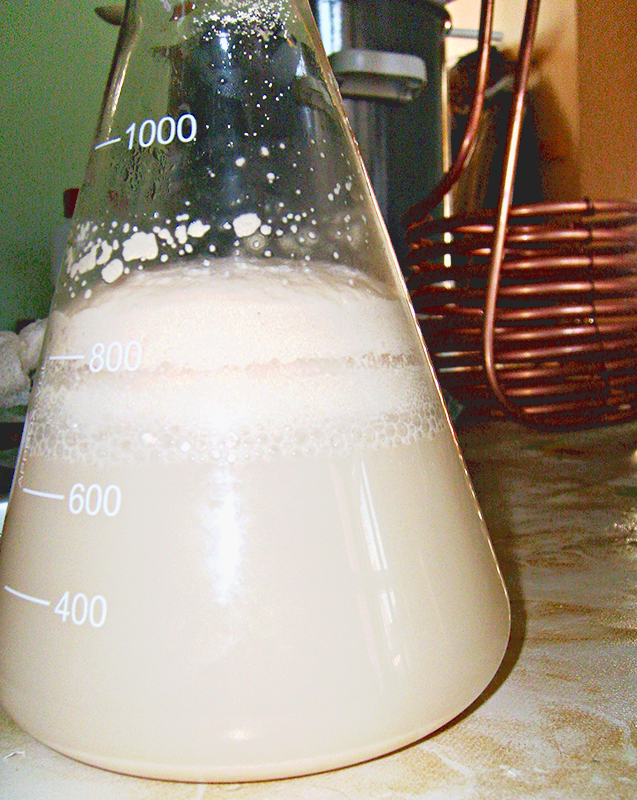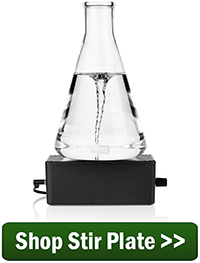 Tim from One Mind Brewing shares some tips and tricks about working with his favorite brewing ingredient: yeast.
Tim from One Mind Brewing shares some tips and tricks about working with his favorite brewing ingredient: yeast.
My name is Tim, and I’m a brewaholic. I love beer, I love brewing beer, and I love everything about the process. Today I want to ramble about the most important ingredient. What is it you ask? Well, to get there first we must ask a simple question.
What makes beer?
The single most important ingredient when it comes to making beer is yeast. To those who might argue and say that without water there is no beer, my retort is simple: With water and no yeast you still have no beer, so to me, the yeast is the most important ingredient!
Getting the Most From Your Beer Yeast – Pitching Rates
The beer yeast is a huge part of what makes beer. Without adequately pitched yeast, flavor profile and alcohol content are difficult to control at best, and horrific at worst.
You may have noticed the word “adequately” in there. It’s probably the most important word, because without an adequate yeast pitch it’s entirely possible you’ll still end up with beer — even likely. But it’s much harder to get the exact result you want without consistent yeast pitching across all of your homebrew batches.
But what is adequate, exactly? Well, there are a few sources online to help with that. My go-to source for preparing a dry yeast starter is Mr Malty, because there is a dry yeast option. For preparing liquid beer yeast starters though, I prefer yeastcalculator.com. Both options are fairly intuitive, but I’ll share some tips below.
Preparing a Beer Yeast Starter – Parameters
If you’re new to calculating pitch rates, don’t worry about the additional “steps” as mentioned in the calculators. It’s not really necessary if you’re using fresh yeast and making a moderate gravity brew. The important parts here are: the date on the beer yeast to determine viability; the starting specific gravity of your beer (OG, as measured with a Hydrometer or Refractometer); the volume of the starter; and the aeration method of the starter. There is also a starter calculator off to the left to help you with how much DME to use for your starter, though that becomes rote quickly if you do the same size starters regularly.
Do I Have to Have a Stir Plate?
It is important to note that you do not absolutely need a stir plate or any specialized equipment other than a jug or a growler to do a yeast starter in. However, you will get far better results out of a stir plate.
Preparing a Beer Yeast Starter – Aeration
Back to the calculator. The first two options for “Method of Aeration” are pretty self-explanatory. If you’re not going to shake the starter periodically, put none. If you are, then select “intermittent shaking.” Then you’ve got Troester vs. Zainasheff. My understanding is that Zainasheff’s method is to scale up from unstirred starters, while Troester’s method was devised with science. Cell counts from stir plate starters, rather than guesswork based on unstirred. If you’re ready for a headache or have a much better understanding of it than I do, read more about it here. That said, I opt for the Troester method with my stir plate.
Putting Your Yeast Starter to the Test
The real fun part about yeast starters is learning (trial and error means you get to brew MORE!) what pitch rates result in what flavor profiles. While there are some resources online to assist, you really do have to try it to know for sure with your own setup what works best for you. For example, I wanted a Hefeweizen with a more pronounced banana flavor/aroma. After a bit of research, I stumbled upon this lovely thread regarding open fermentation to get more ester production. I blogged about it on my blog and used WLP300 for that one. I’m going to try open fermenting with WLP565 (Belgian Saison) in the near future as well as a few others, though those aren’t set in stone just yet. There are many, many ways to experiment with beer yeast and flavor profiles. Your only limit is your imagination. Well, that and your bank account I suppose.
To really be able to appreciate it, experimentation needs to be done in a controlled way. The best way to control it is to do things in reproducible ways. The most important variable is controlling your yeast pitch rates and the fermentation temperature. If you have a fermentation chamber, great. If not, a simple swamp cooler will suffice. The hard part is really going to be reproducible yeast pitch rates for new brewers.
Without doing yeast cell counts in a lab, the best we can do on a homebrew scale is to keep the way we are preparing our beer yeast starter consistent and use the same equipment every time. Your exact numbers may not match what the calculators say, but as long as you’re consistent within your process, the results will be reproducible on your system. That’s the important part for experimentation, at least as far as I and my taste buds are concerned.
Remember: The difference between science and screwing around is writing it down. So don’t forget to take notes while you brew!
So know you should have enough information for preparing your own beer yeast starter. If you have any questions about yeast starters, feel free to reach out!
—————————————————————–
Tim Daniel is a brew blogger from One Mind Brewing. He’s an avid brewer who loves sharing tips and tricks with others. You can visit him on Facebook, as well.
